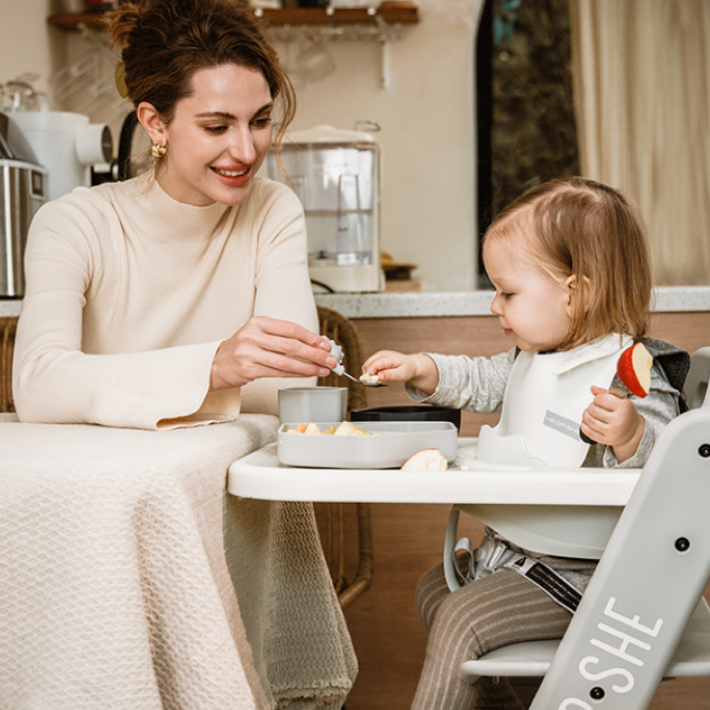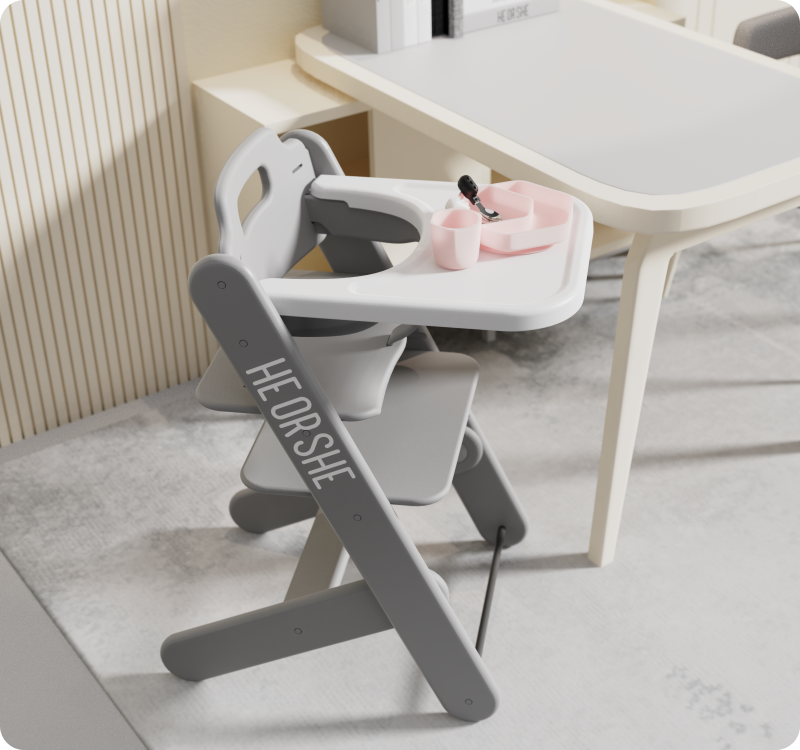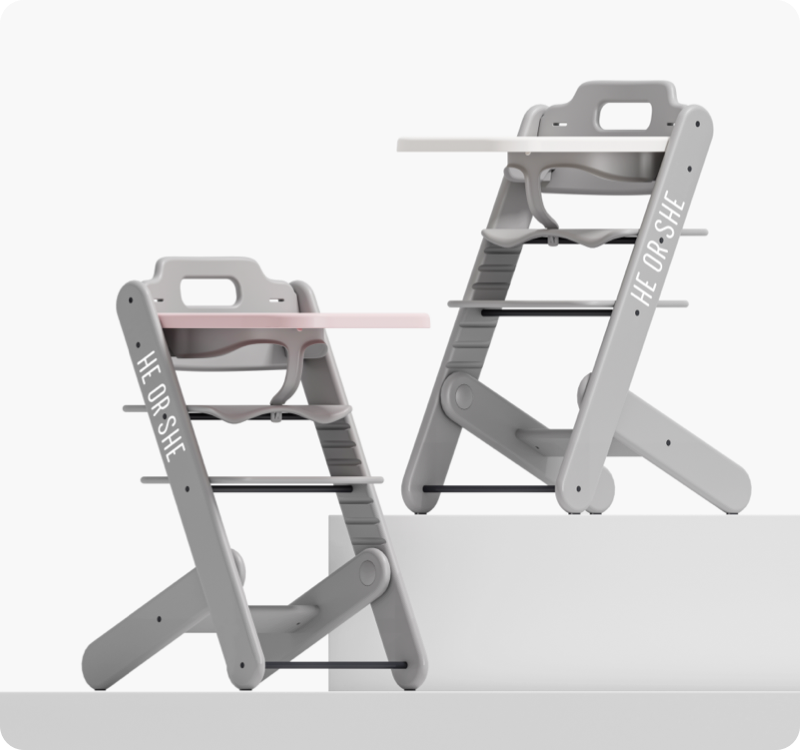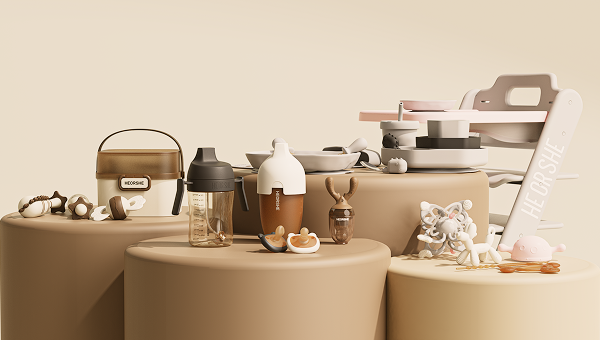Introduction
Introducing solids to a baby is a significant milestone, marking a new phase in their developmental journey. At around six months of age, most infants are ready to explore new tastes and textures, making it the ideal time to invest in a reliable feeding high chair. However, with so many options available, choosing the best high chair for a 6-month-old can be overwhelming. Parents must consider factors like safety, comfort, adjustability, and ease of cleaning to ensure a hassle-free feeding experience. In this comprehensive guide, we will explore everything you need to know about selecting the right high chair, from key features and types to safety tips and top recommendations.

Why a High Chair is Essential for a 6-Month-Old
A high chair is more than just a piece of baby furniture; it is a crucial tool that fosters healthy feeding habits, safety, and social interaction. At six months old, babies typically start eating solid foods alongside breast milk or formula. Having a designated feeding high chair provides a safe and secure space where they can sit upright, reducing the risk of choking and aiding digestion. Additionally, it helps babies develop essential motor skills as they learn to grasp food and bring it to their mouths. High chairs also play a key role in family bonding, allowing babies to sit at the dinner table and participate in mealtime rituals, reinforcing social and communication skills.
Key Features to Consider When Choosing a High Chair for a 6-Month-Old
When selecting a feeding high chair for a 6-month-old, parents should focus on features that enhance safety, comfort, and functionality. Here’s a detailed look at the essential features:
Safety Features:
Harness System: A secure harness system is crucial to keep the baby safely seated. Opt for a 5-point harness for maximum security, as it secures the shoulders, waist, and crotch area, preventing the baby from slipping or climbing out.
Stable Base: Ensure the chair has a broad, stable base to prevent tipping. Anti-slip feet or rubberized legs add extra stability, especially on smooth floors.
Safety Certifications: Look for chairs certified by safety organizations such as ASTM (American Society for Testing and Materials) and JPMA (Juvenile Products Manufacturers Association), indicating rigorous testing for structural integrity and safety.
Adjustability and Comfort:
- Reclining Seat: Reclining options are beneficial for younger infants who cannot sit upright for extended periods. Adjustable backrests allow for more relaxed positioning during bottle feeding or after meals.
- Footrest Adjustment: A footrest provides proper leg support, promoting better posture and preventing discomfort during longer feeding sessions. Adjustable footrests accommodate the child’s growth.
- Padded Seating: Cushioned seats ensure maximum comfort, especially during longer meals. Opt for removable and washable covers to keep the seating area clean and hygienic.
Ease of Cleaning:
Babies are naturally messy eaters, making cleaning an important consideration. Choose high chairs with removable trays that are dishwasher-safe and surfaces that can be wiped down easily. Seamless, crevice-free designs prevent food buildup and bacterial growth.
Portability and Storage:
For families with limited space, foldable high chairs offer convenient storage solutions. Lightweight models with wheels can be moved easily from room to room, while space-saving designs can be attached directly to dining chairs or tabletops.

Types of Feeding High Chairs
High chairs come in various styles, each catering to different needs and preferences. Here are the primary types:
Traditional High Chairs:
Classic high chairs feature a fixed height and a spacious tray. They often include a reclining seat and padded cushions. While they are sturdy and durable, they can be bulky and less portable.
Convertible High Chairs:
Convertible models are designed to grow with the child, transitioning from a high chair to a booster seat or toddler chair. They are cost-effective and versatile, but may require more space for storage.
Portable High Chairs:
Ideal for families on the go, these compact chairs can be folded and transported easily. Some clip onto standard dining tables, while others attach to existing chairs, making them perfect for travel and small apartments.
Space-Saving High Chairs:
These models attach directly to dining chairs, reducing floor space usage. They are lightweight, easy to store, and suitable for smaller living spaces.
Top Recommendations for the Best High Chair for a 6-Month-Old
1.Heorshe Convertible High Chair
The Convertible High Chair is designed to meet the changing needs of infants and toddlers, featuring an adjustable height for enhanced comfort. It allows for easy height adjustments, ensuring proper support at each stage of a child’s growth. Its versatility makes it an ideal and practical choice for families, offering smooth transitions as children grow.
2.Graco Slim Snacker High Chair:
This affordable, foldable high chair features a 3-position reclining seat, a one-hand removable tray, and a large storage basket. Its wipeable fabric makes cleaning effortless, and it can be folded flat for storage.
3.Inglesina Fast Table Chair:
Compact and travel-friendly, this chair attaches securely to most tables using twist-tight couplings. It includes a carrying bag and machine-washable seat cover, making it ideal for families on the move.
4.Stokke Tripp Trapp High Chair:
Crafted from sustainable beech wood, this premium chair offers adjustable seating and footrest positions to accommodate newborns to toddlers. Its ergonomic design promotes healthy posture, and it can be used as a regular chair as the child grows.
5.Fisher-Price SpaceSaver High Chair:
Designed to fit onto most dining chairs, this high chair saves space while providing the safety features of a full-sized model. It includes a 5-point harness, adjustable tray, and machine-washable seat pad.
Benefits of Using a High Chair During Feeding
Promotes Healthy Eating Habits: Sitting in a high chair helps babies associate mealtime with eating, establishing a consistent routine and reducing distractions.
Improves Digestion: Upright positioning facilitates proper digestion, reducing the risk of acid reflux and choking.
Encourages Social Interaction: Sitting at the dining table fosters family bonding and social interaction, enhancing the baby’s communication and observational skills.
Supports Motor Skill Development: High chairs provide a stable surface for babies to practice grasping utensils, finger foods, and cups, promoting fine motor skills and hand-eye coordination.

Safety Tips for Using a Feeding High Chair
Always secure the baby using the harness system, ensuring that all straps are properly fastened and adjusted.
Avoid placing the high chair near sharp edges, cords, or hot surfaces to prevent accidents.
Regularly inspect the high chair for signs of wear and tear, especially on harness straps, buckles, and joints.
Never leave the baby unattended in the high chair, even for a brief moment.
Keep small toys or objects off the tray to prevent choking hazards.
Conclusion
Choosing the best high chair for a 6-month-old is an important decision that can impact feeding experiences for both parent and child. By focusing on key features such as safety, comfort, adjustability, and ease of cleaning, parents can select a feeding high chair that meets their baby’s developmental needs while fitting seamlessly into their home environment. Whether opting for a convertible, space-saving, or portable model, the right high chair can transform feeding time into a safe, engaging, and enjoyable activity.


